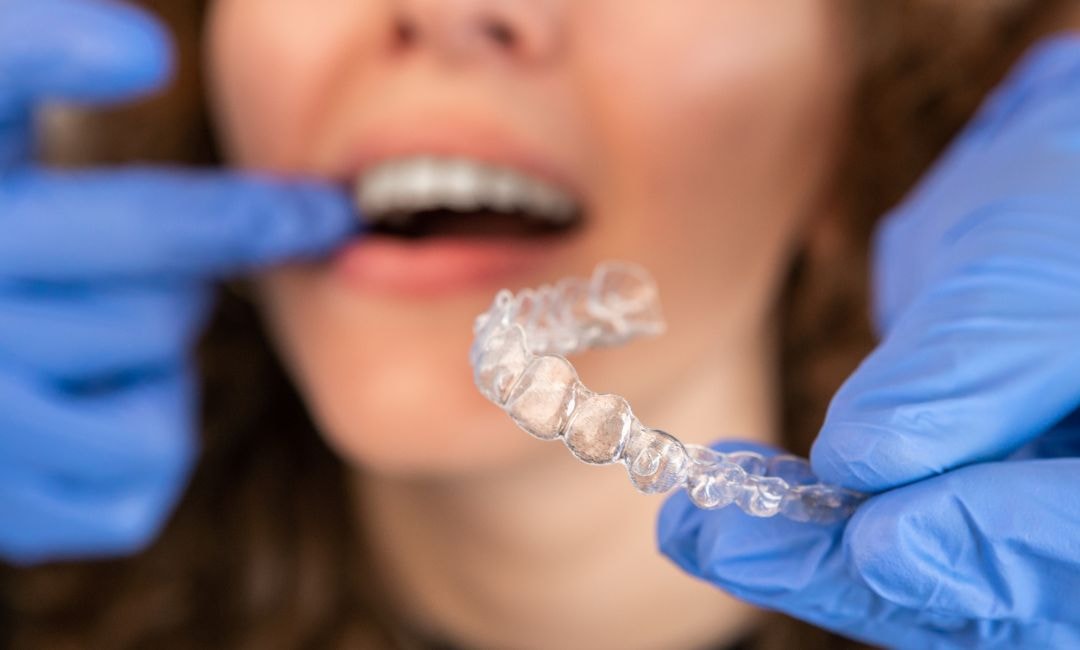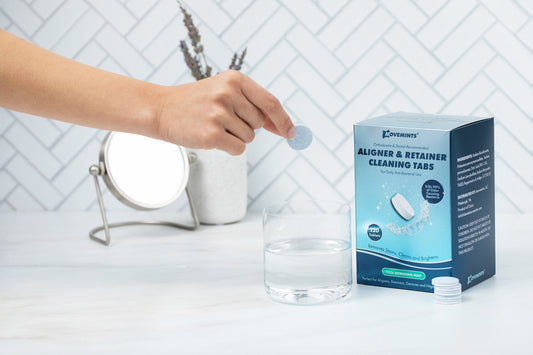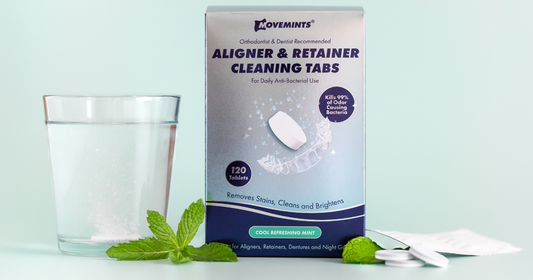Can Invisalign Move Molars? Understanding Its Limitations and Benefits
Wondering if Invisalign can straighten your molars? Let's clear things up. While Invisalign is a fantastic tool for many orthodontic needs, its ability to move molars depends on various factors, including the severity of the misalignment and the individual's unique dental structure.
In this article, we'll break down everything you need to know about Invisalign and molars, including:
- The mechanics of how Invisalign moves teeth.
- Limitations of Invisalign for molar movement.
- Benefits of Invisalign for molar correction.
- Tips for successful molar movement with Invisalign.
And hey, if you're already rocking those aligners, Movemints can be your new best friend. They help seat your trays, freshen breath, and even relieve some aligner discomfort.
How Invisalign Treatment Works
Invisalign uses a series of clear, custom-made aligners to gradually shift your teeth into their desired positions. These aligners are made from a smooth, comfortable plastic that fits snugly over your teeth.
Each aligner in the series is slightly different, applying gentle pressure to specific teeth to guide them into the correct alignment. You'll typically wear each set of aligners for about two weeks before switching to the next set in the series.
This gradual movement allows your teeth and gums to adapt comfortably to their new positions.
Invisalign and Molars: Not Always a Perfect Match

Invisalign is awesome for straightening teeth, but it's not a magic wand. When it comes to molars, there are a few situations where it might not be the ideal solution:
- Root Control: Molars have multiple roots, making them a bit trickier to move with precision. Invisalign might not provide the level of control needed for complex molar movements.
- Anchorage: Sometimes, orthodontists need to use other teeth as anchors to move molars effectively. Invisalign might have limitations in achieving this.
- Bite Correction: While Invisalign can correct some bite issues, severe cases involving molars might require traditional braces for optimal results.
- Extraction Cases: If you need teeth extracted before straightening, traditional braces might be a better option for managing space closure and molar movement.
Don't get discouraged, though. Invisalign is constantly evolving, and its capabilities are expanding. Your orthodontist is the best person to assess your specific needs and recommend the most appropriate treatment.
Why Invisalign Can Be Great for Molars
There are some definite perks to using these clear aligners for molar correction:
- Comfort: Say goodbye to the pokey wires and brackets of traditional braces. Invisalign aligners are smooth and comfortable to wear.
- Aesthetics: No one loves the look of metal braces. Invisalign aligners are virtually invisible, so you can straighten your teeth with confidence.
- Convenience: Invisalign aligners are removable, making it easier to eat, brush, and floss. Plus, you'll have fewer appointments with your orthodontist compared to traditional braces.
- Predictability: Invisalign uses advanced technology to map out your treatment plan, giving you a clear picture of how your crooked teeth will move over time.
If you're looking for a discreet and comfortable way to correct your molar alignment, Invisalign might be a fantastic option. Just remember to chat with your orthodontist to see if it's the right fit for your specific needs.
Can Invisalign Really Move Molars?
The short answer? It depends.
Invisalign can be a great option for correcting mild to moderate molar misalignment. However, for more severe cases, traditional braces might be a better choice.
Invisalign is like a skilled sculptor, but it has its preferred tools and materials. It excels at subtle, gradual movements, making it great for many cases of molar misalignment. But when it comes to those really stubborn, dramatically out-of-place molars, it might need some extra help.
Here's the deal:
- Mild to moderate crowding or spacing? Invisalign orthodontic treatments often shine to straighten teeth.
- Slight rotations or tilts? Invisalign attachments can usually handle it.
- Major shifts, complex bite issues, or vertical movements? Traditional braces might be a more effective option.
The key is to remember that every mouth is unique. What works for one person might not work for another. That's why it's crucial to get a professional opinion. An orthodontist can assess your specific needs and determine if Invisalign is the right tool for the job.
Invisalign Molar Movement: Tips for Success

Here are some tips to maximize your molar movement and overall treatment success:
- Wear your aligners as directed: Consistency is key. Go for 20-22 hours of wear time per day.
- Use chewies: These little guys help ensure your aligners fit snugly against your rotated teeth, which is essential for effective tooth movement.
- Maintain good oral hygiene: Brush and floss diligently to keep your lower and upper teeth and gums healthy throughout your treatment.
- Don't forget your Movemints. Seriously, they can help seat your aligners, freshen breath, and even provide some pain relief.
By following these tips and working closely with your orthodontist, you'll be well on your way to achieving a straighter smile and proper molar alignment with Invisalign braces.
Ready to Straighten Those Molars?
Invisalign can be a fantastic option for molar correction, but it's important to understand its limitations and work closely with your orthodontist.
Here's a quick recap of the essentials:
- Invisalign can move molars, but it might not be suitable for all cases.
- Consult with an orthodontist to determine if Invisalign is right for you.
- Follow your orthodontist's instructions carefully and maintain good oral hygiene.
Speaking of keeping things fresh and comfortable, don't forget about Movemints. They're the perfect companion for your Invisalign treatment. Pop one in after brushing to help seat your aligners, freshen your breath, and even relieve some of that pesky aligner discomfort.
FAQs
Can you rotate molars with Invisalign?
Yes, Invisalign can often rotate molars, but it depends on the severity of the rotation. For minor rotations, Invisalign can be very effective. However, for significantly rotated molars, traditional braces might provide better control and precision.
Are molars the hardest teeth to move with Invisalign?
Molars can be among the more challenging upper and lower teeth to move with Invisalign due to their size, root structure, and position in the mouth. But don't worry, it's definitely possible. Your orthodontist can assess your specific case and determine the best approach.
Why are molars harder to move?
Molars have a few factors working against them when it comes to tooth movement:
- Multiple roots: Unlike front teeth, molars have two or three roots, making them more resistant to movement.
- Position: Molars are located further back in the mouth, where it can be trickier to apply the necessary forces for effective movement.
- Function: Molars play a crucial role in chewing, which means they experience significant forces that can sometimes hinder movement.
What kind of teeth does Invisalign not work on?
While Invisalign fix can treat a wide range of orthodontic issues, there are some situations where it might not be the ideal solution:
- Severely rotated or tilted, crowded teeth: In these cases, traditional braces might offer better control.
- Teeth with short roots: Teeth with short roots may not be good candidates for movement with any orthodontic treatment.
- Complex bite issues: Severe overbites, underbites, or crossbites may require more complex treatment approaches.
Remember, your orthodontist is the best resource for determining if Invisalign retainers are right for your specific needs.



